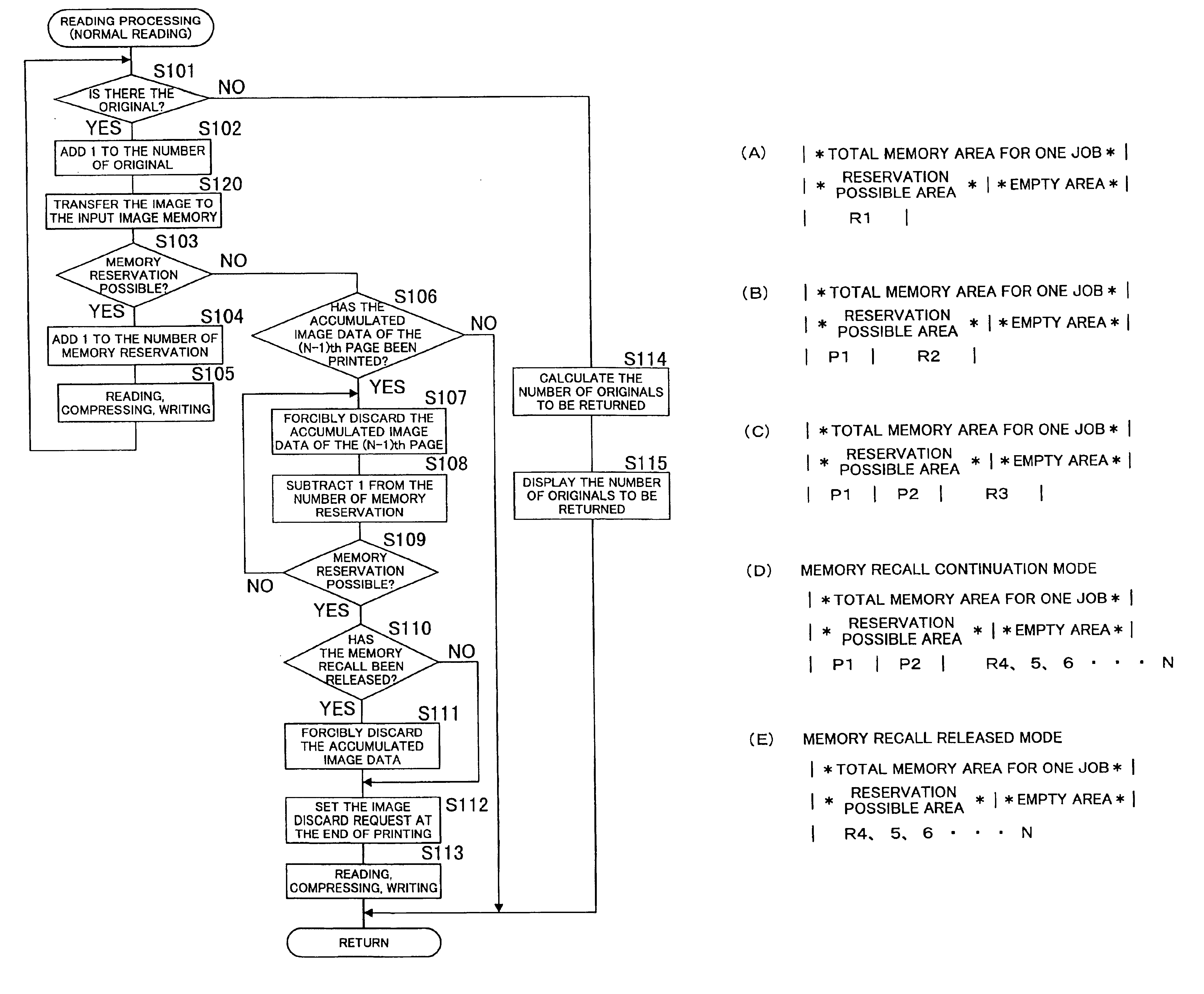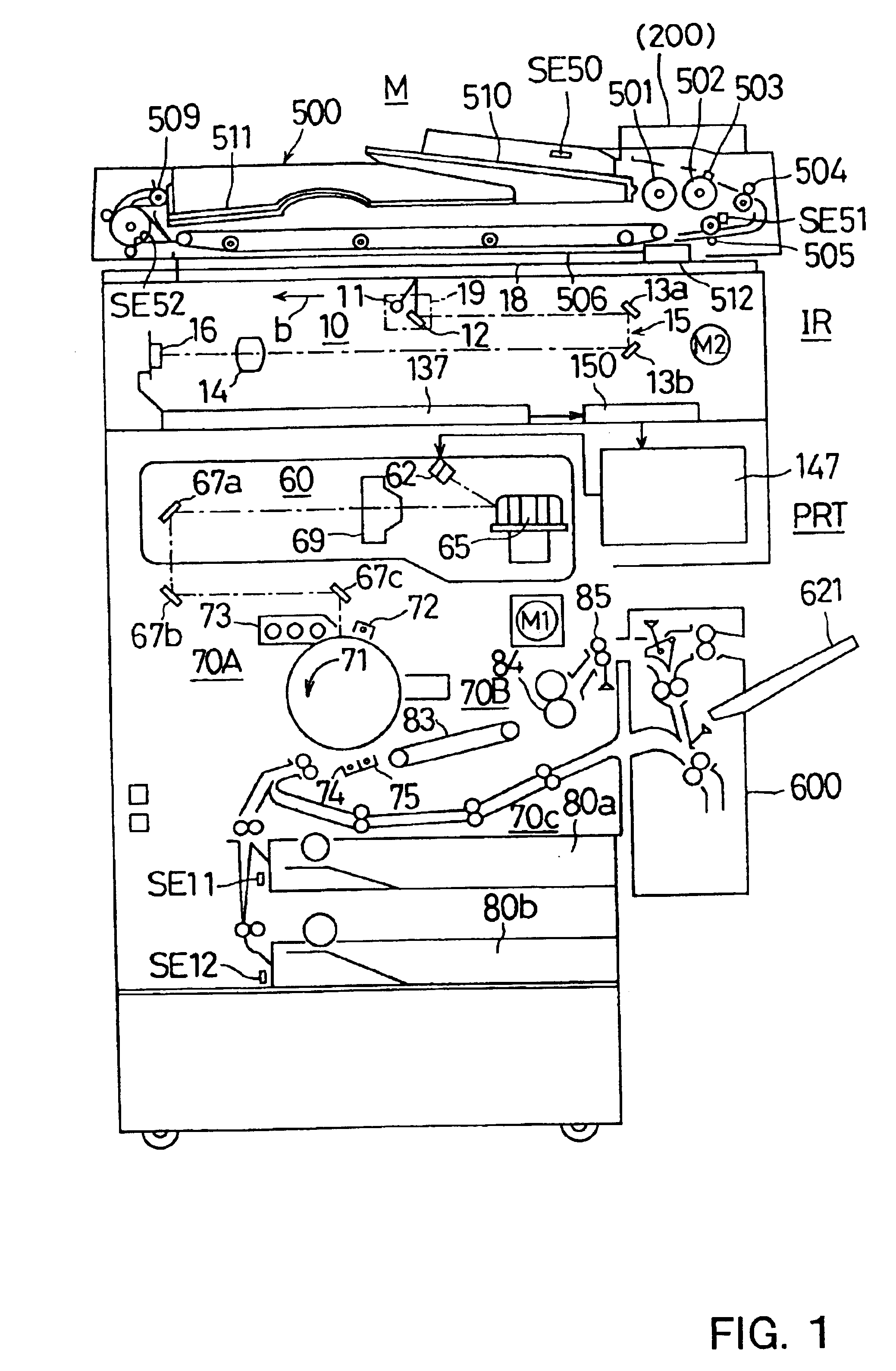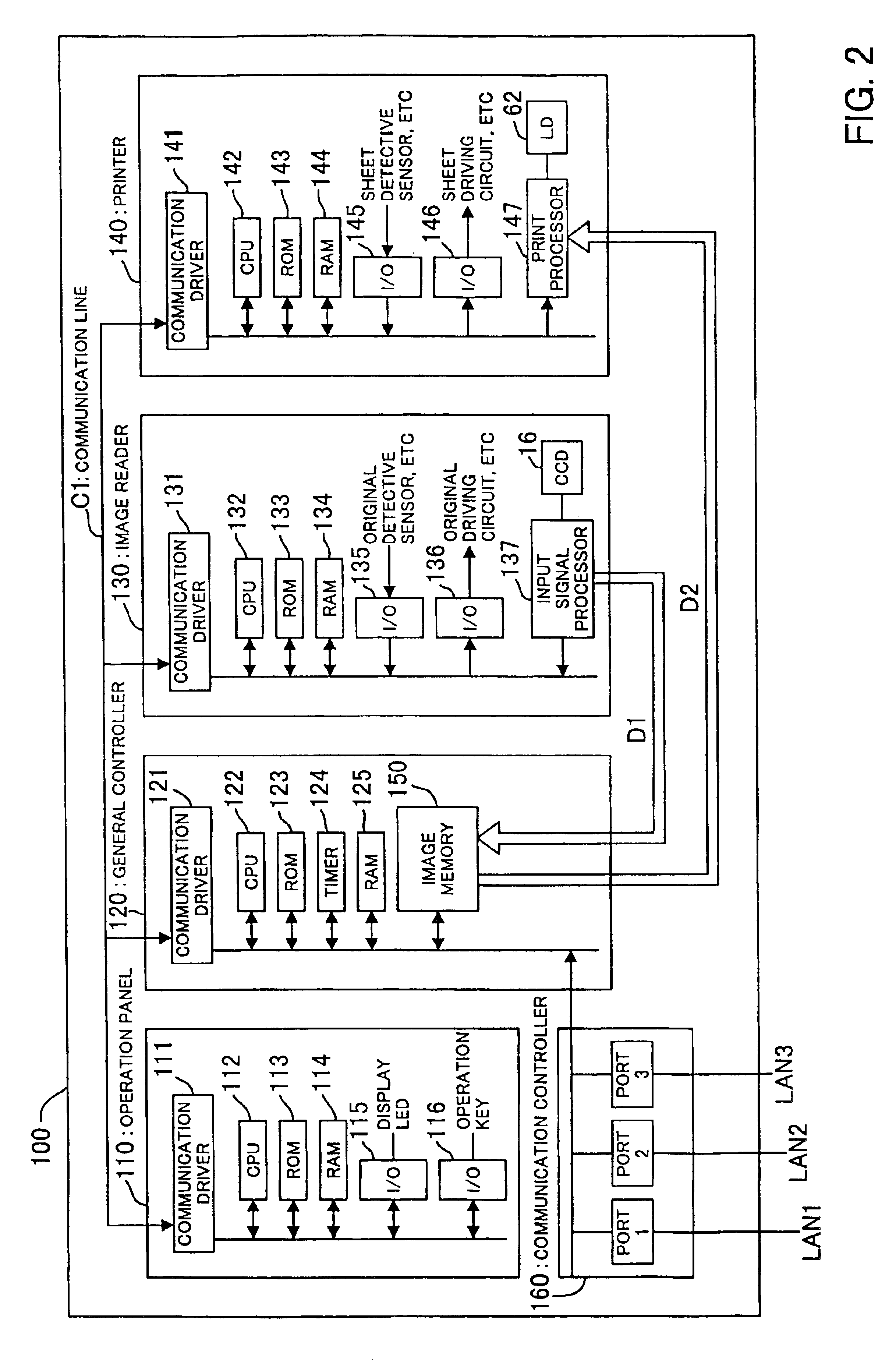Image processing system and image processing method
a technology of image processing and image data, applied in the field of image processing system, can solve the problems of image processing speed as a whole becoming slower, image data compression rate of a page including a great amount of half tones such as a picture, and not always affecting the image processing speed of the print system, so as to avoid deterioration of image processing speed
- Summary
- Abstract
- Description
- Claims
- Application Information
AI Technical Summary
Benefits of technology
Problems solved by technology
Method used
Image
Examples
Embodiment Construction
FIG. 1 is a front vertical cross-sectional view showing a schematic structure of a copying machine M equipped with a print system which is an image processing system according to one embodiment of the presents invention. As shown in FIG. 1, the copying machine M is a digital copying machine equipped with an image reader IR and a page printer PRT.
In the following description, the state that it becomes impossible for a memory to store image data due to insufficiency of memory capacity, is called “memory full,” and the state that it becomes impossible for a memory to store image data under the condition that an empty area of a predetermined capacity remains in the memory, is called “memory near full.”
The image reader IR includes a scanner 10, an input signal processor 137 and an image memory 150, and reads an original document placed on an original document placing glass plate 18 to generate image data corresponding to each pixel of the original image. A first scanner 19 equipped with ...
PUM
 Login to View More
Login to View More Abstract
Description
Claims
Application Information
 Login to View More
Login to View More - R&D
- Intellectual Property
- Life Sciences
- Materials
- Tech Scout
- Unparalleled Data Quality
- Higher Quality Content
- 60% Fewer Hallucinations
Browse by: Latest US Patents, China's latest patents, Technical Efficacy Thesaurus, Application Domain, Technology Topic, Popular Technical Reports.
© 2025 PatSnap. All rights reserved.Legal|Privacy policy|Modern Slavery Act Transparency Statement|Sitemap|About US| Contact US: help@patsnap.com



